Unless you tend a garden outside your igloo, chances are your lettuce crop starts to phase out by late June, maybe even before then. These cool-weather crops are often the first in my garden to send up flower stalks as air and soil temperatures rise with the start of summer.
I have always felt that Mother Nature played a wicked joke on us gardeners—giving us bounties of juicy tomatoes in the summer, but none in the winter when salad greens are at their freshest, sweetest, and most abundant.
I grow a variety of heat-tolerant greens for my summer salad fix (edible red leaf amaranth, spinach chard, and several Asian mustards) and even tried to grow traditional spinach for a while under the shade of a fruit tree. While that spring-sown spinach usually held off on bolting too early in summer, it also barely grew beyond a few inches and a few leaves. As I found out, too much shade was just as problematic as too much sun.
Related: These are the best vegetables, herbs, and fruits that will grow in shade
But years of trial and error—and many, many bolting plants—finally led me to discover the best types of lettuces that don’t mind a little heat in the middle of summer.
Disclosure: If you shop from my article or make a purchase through one of my links, I may receive commissions on some of the products I recommend.
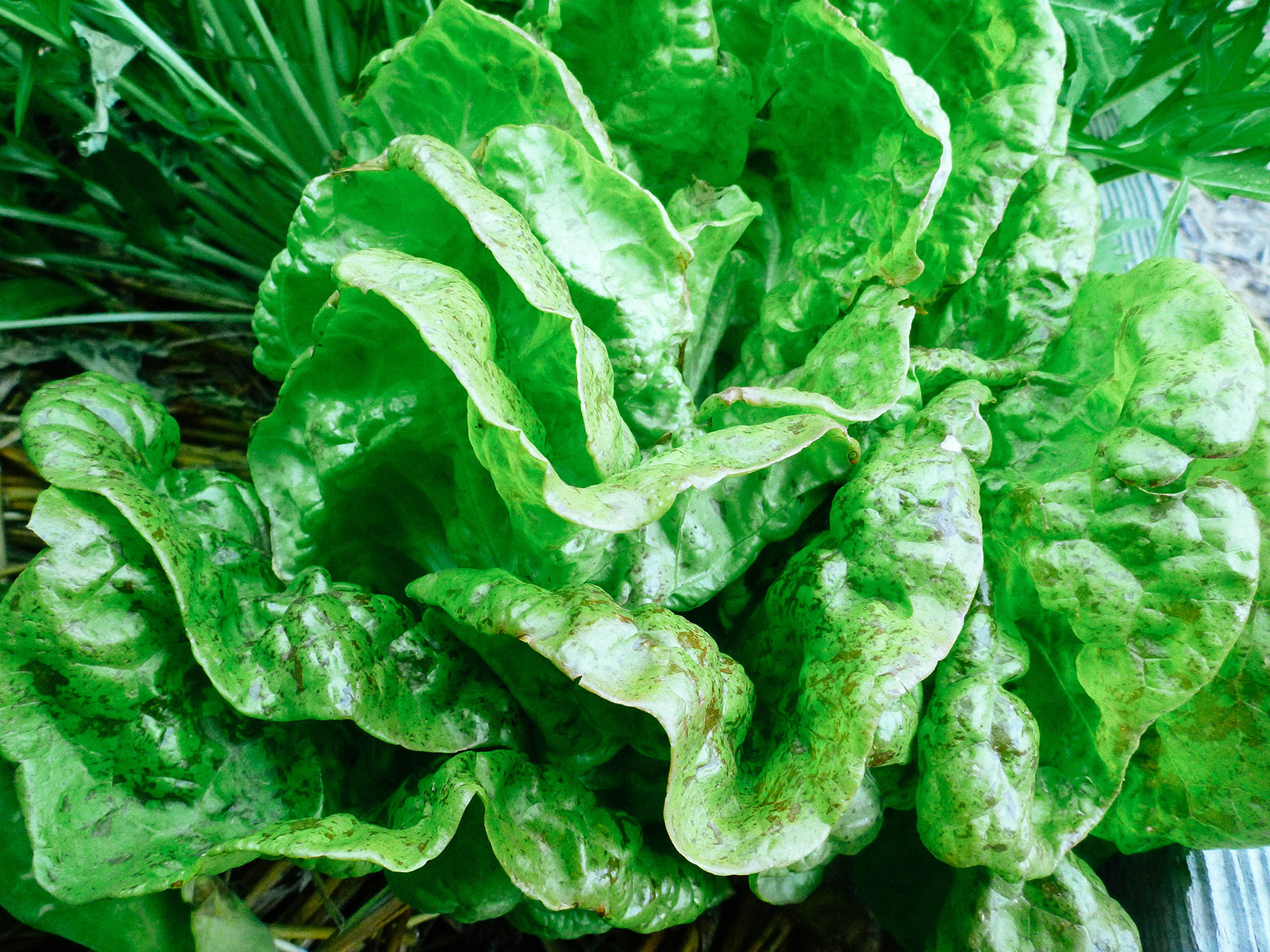
Why butterhead lettuce is the best summer salad green
Butterhead lettuce is usually known for being among the most heat-tolerant and bolt-resistant of all the lettuce types. Many lettuces can be successfully started from seed in early spring and harvested through summer, especially if you live in a mild summer region, but…
Sometimes the flavor is lacking. Sometimes a heat wave will spur a flower stalk to form. Sometimes you have to shade your lettuce crop, or water more frequently, or sow a succession of seeds every other week because your lettuce keeps bolting.
I simply wanted lettuce that I could treat like any other summer crop, one that would taste like lettuce tastes the other three seasons. No fuss, no muss.
One year in my coastal zone 10b garden, I started Butterhead Speckles lettuce seeds in small pots outside, under full sun, in late May. The seeds germinated within a week and I transplanted the strongest seedlings into the garden in June.
My summer salad bed got at least eight hours of direct sun per day, with the last light fading in late afternoon. The lettuce grew slowly through our on-and-off June gloom, but going into July, it seemed to double in size overnight.
The loosely formed heads had several layers of slightly ruffled, bright and light green, red-specked leaves that were as tender and sweet as my winter-grown lettuce. I picked off individual leaves as I needed them, and new leaves continued to come up steadily.
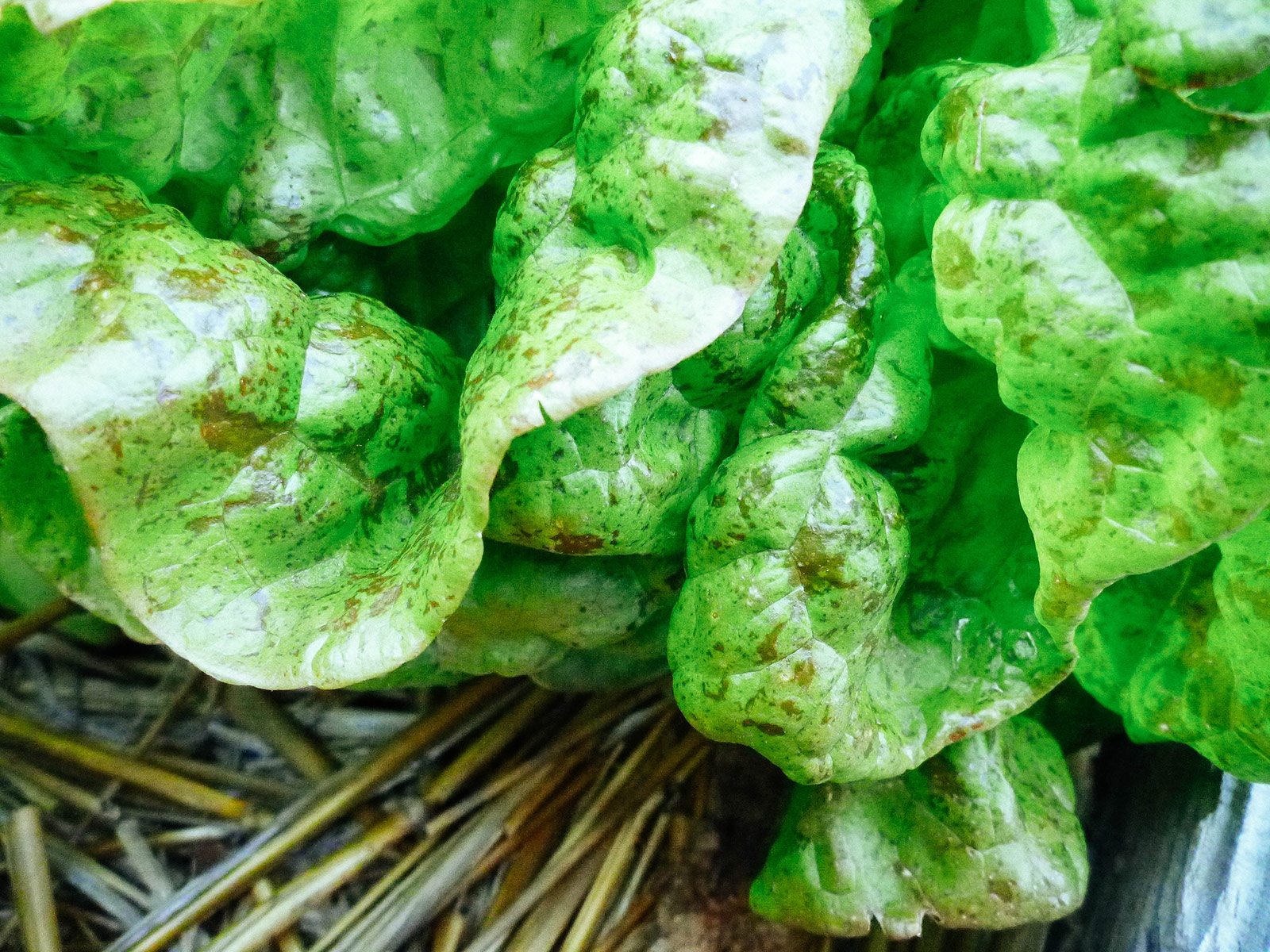
The butterhead lettuces were oblivious to the fact that summer was in full swing; in fact, they seemed to thrive on those longer, warmer days. I watered only twice a week and mulched heavily with straw. They had incredible heat tolerance with no signs of bolting within the first couple months. The leaves didn’t even droop in the middle of the day, when the sun was harshest.
That was in Southern California, when the summer always started off mild (averaging 75°F to 80°F during the day) but in the fall, highs of 90°F or more were common as Santa Ana winds swept through. Our Indian summers were usually the hottest and driest weeks all year, and those butterhead lettuces lasted through the end of September—four months after germination!
Because of that, Butterhead Speckles earned its place as a delicious staple in my summer garden. (I continue to grow it now in Central Oregon, where my south-facing garden gets blazing hot sun from 8am to 7pm all summer.)
More heat-holerant lettuce varieties
If your summer-shy lettuces have bitten the dust, here are some other heat-tolerant varieties to try. I’ve grown many of these salad greens over the years with a good level of success.
I should also mention that if a certain open-pollinated variety that does especially well in your climate, it’s worth saving the seeds from that lettuce to plant the following year—then saving the seeds from those lettuces to plant the year after that.
By continually saving seeds from your best-performing plants, they will eventually adapt to your growing conditions and become even more resistant to heat, drought, or whatever challenge summer throws their way.
Quick Tip
Should the list below feel overwhelming, try this heat wave mix instead, which blends several different slow-bolting lettuce seed varieties in one packet. (That’s also my favorite company for finding these kinds of heat-tolerant lettuce seeds in one place.)
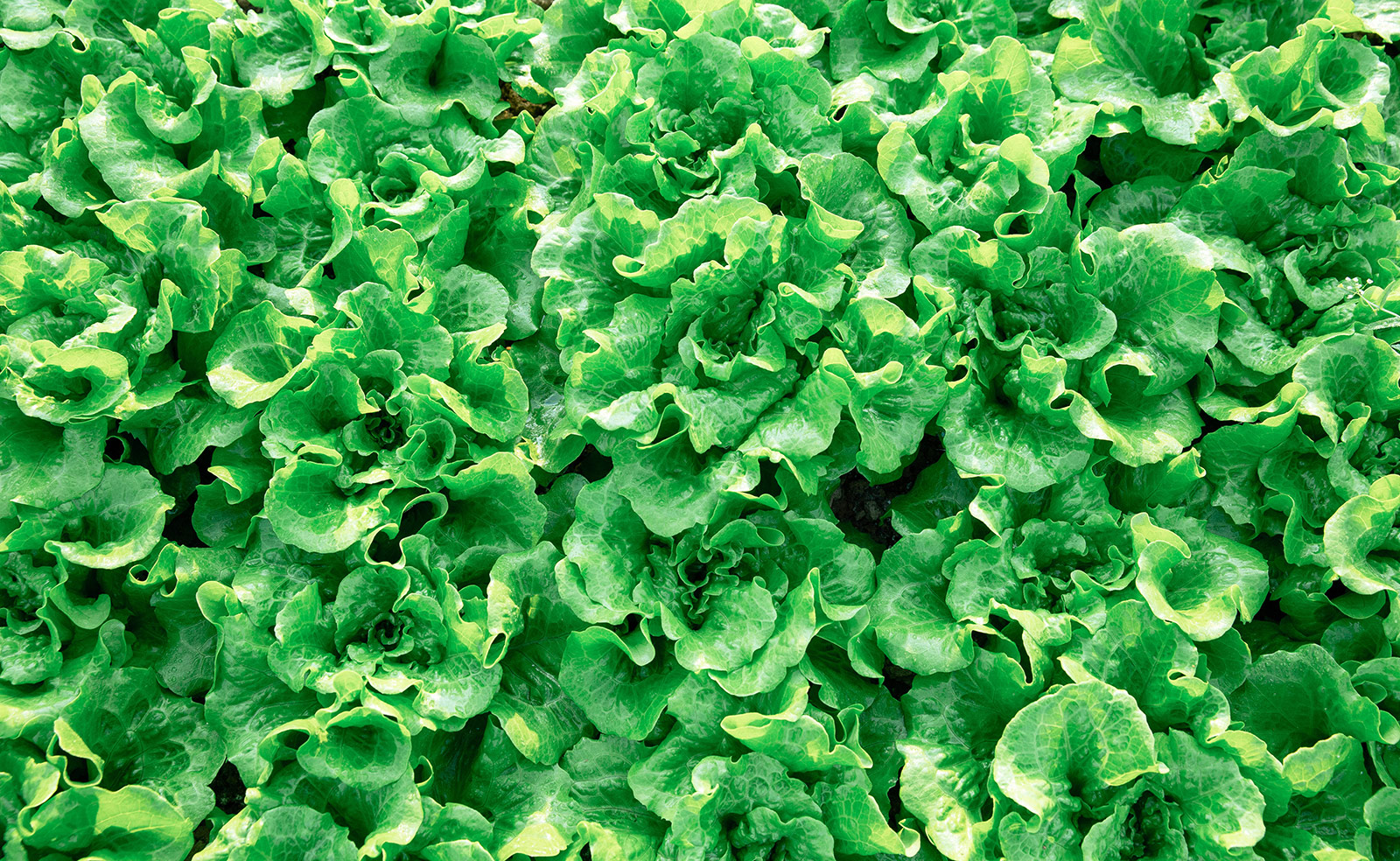
Butterhead/bibb
- Adriana – Improved version of Ermosa
- Bronze Mignonette – Excellent in hot climates, semi drought-tolerant, heat-tolerant, slow to bolt
- Butterhead Speckles – See story above
- Buttercrunch – Semi drought-tolerant, heat-tolerant, slow to bolt
- Capitaine – Heat-tolerant
- Ermosa – Heat-tolerant, slow to bolt, resistant to tipburn
- Fireball – Heat-tolerant, slow to bolt, resistant to bitterness
- Marvel of Four Season – Heat-tolerant
- Red Cross – Heat-tolerant, slow to bolt
- Red Riding Hood – Heat-tolerant
- Saint Anne’s Slow Bolting – Slow to bolt
- Summer Bibb – Slow to bolt
- White Boston – Heat-tolerant

Green leaf
- Amish Deer Tongue – Heat-tolerant, slow to bolt
- Black-Seeded Simpson – Earliest to harvest, drought-tolerant, heat-tolerant, slow to bolt
- Gentilina – Excellent in hot climates, slow to bolt
- Grand Rapids – Heat-tolerant, resistant to tipburn
- Green Ice – Heat-tolerant, slow to bolt
- Green Star – Heat-tolerant, slow to bolt, resistant to tipburn
- Lollo Biondo – Heat-tolerant
- New Red Fire – Bolt-resistant in summer
- Oak Leaf – Slow to bolt, resistant to tipburn, resistant to bitterness
- Royal Oak Leaf – Heat-tolerant, slow to bolt
- Salad Bowl – Heat-tolerant, slow to bolt, resistant to bitterness
- Tropicana – Heat-tolerant, slow to bolt, resistant to tipburn

Red leaf
- Lollo Rosso – Heat-tolerant
- Merlot – Slow to bolt
- Paradai Oak Leaf – Heat-tolerant
- Red Sails – Heat-tolerant, slowest-bolting red leaf variety, resistant to bitterness
- Red Salad Bowl Oak Leaf – Heat-tolerant, slow to bolt
- Ruby – Deepest red variety, slow to bolt, resistant to tipburn
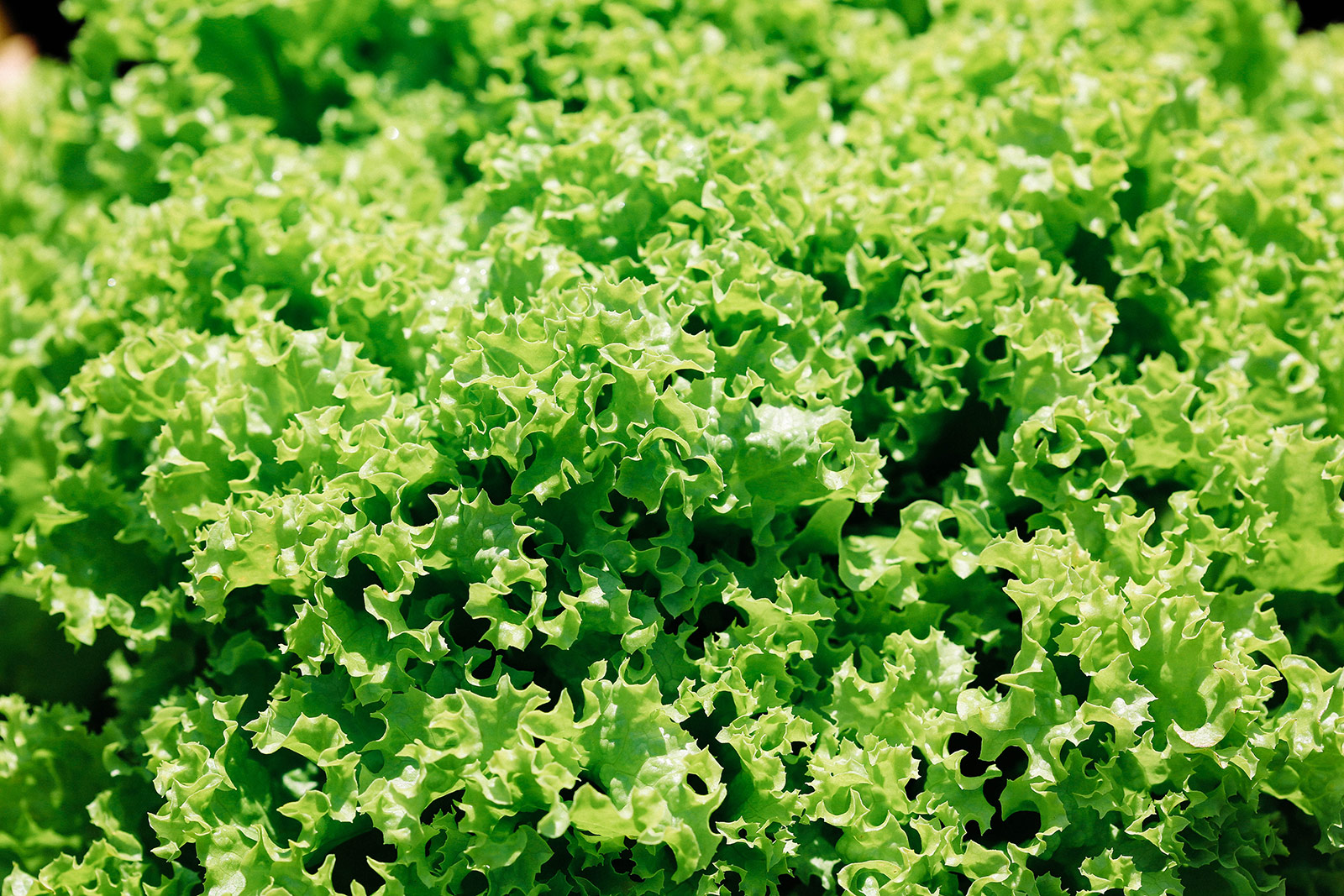
Batavia/French crisp/summer crisp
- Concept – Heat-tolerant
- Ice Queen (Reine Des Glaces) – Heat-tolerant, slow to bolt
- Muir – Heat-tolerant, slow to bolt
- Nevada – Heat-tolerant, slow to bolt, resistant to tipburn (a name like Nevada is fitting—I’m a native Nevadan and the summer heat there is not for the faint of heart!)
- Sierra – Heat-tolerant
- Teide – Heat-tolerant
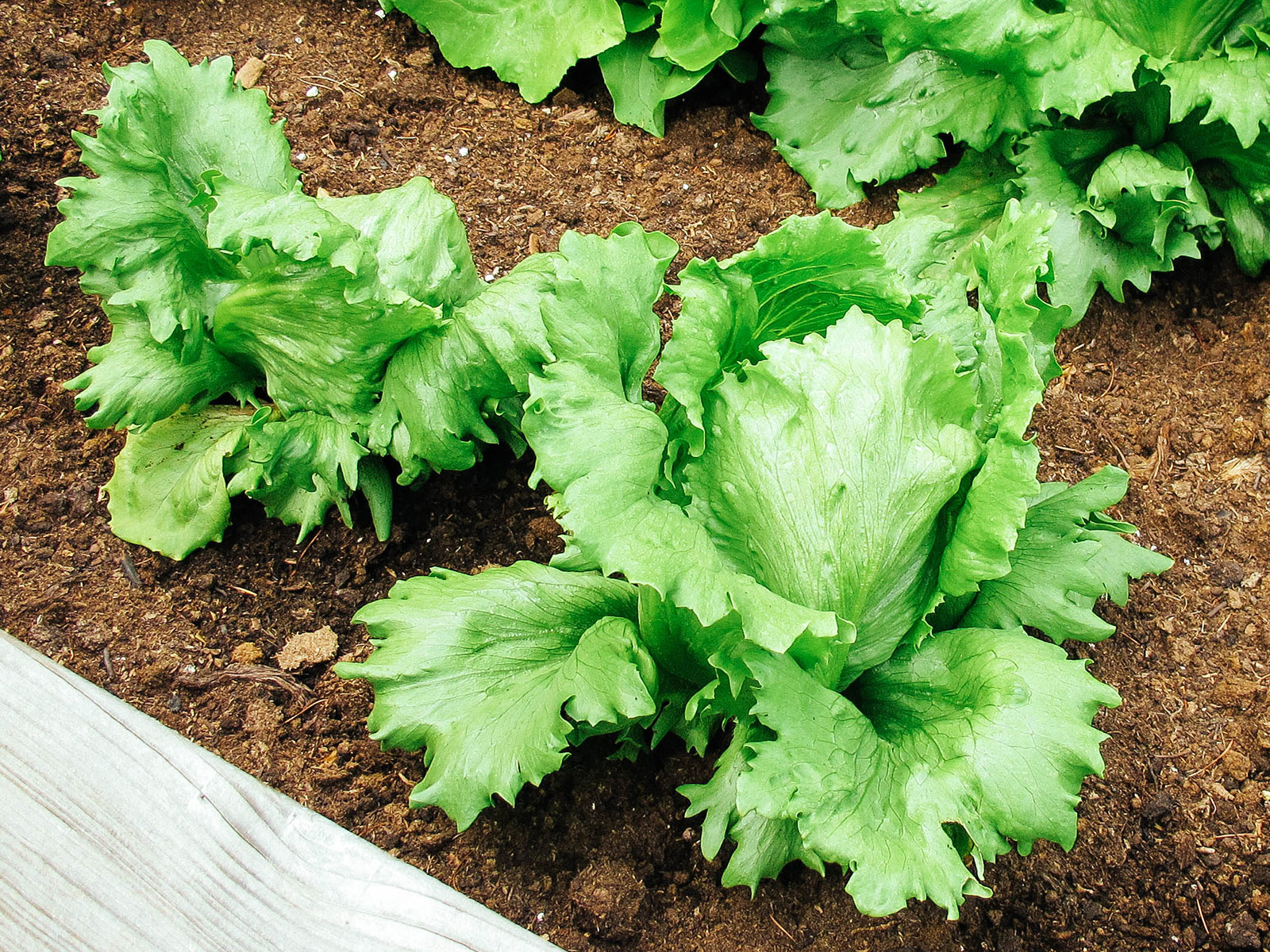
Crisphead/iceberg
- Anuenue – Originally bred in Hawaii, heat-tolerant, slow to bolt, germinates at higher soil temps
- Calmar – Heat-tolerant
- Great Lakes 118 – Heat-tolerant, resistant to tipburn
- Ithaca – Heat-tolerant, slow to bolt
- Minetto – Excellent in hot climates, slow to bolt, resistant to tipburn
- New York – Heat-tolerant
- Summertime – Heat-tolerant, slow to bolt
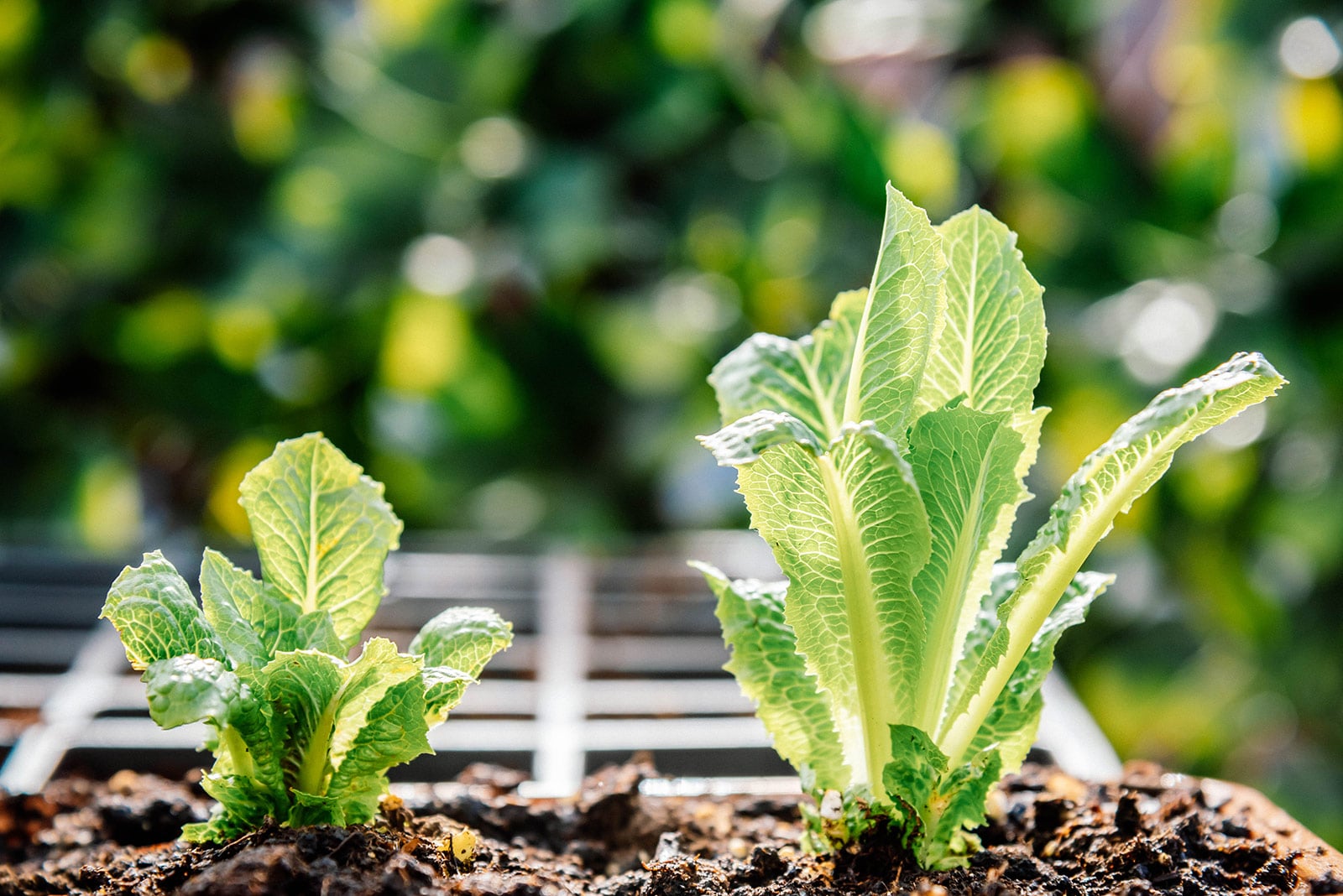
Romaine/cos
- Cimmaron – Slow to bolt
- Coastal Star – Heat-tolerant
- Craquerelle du Midi – Heat-tolerant
- Forellenschuss – Heat-tolerant, slow to bolt
- Green Towers – Heat-tolerant, slow to bolt, resistant to tipburn
- Iya Sol – Early to harvest, heat-tolerant
- Jericho – Originally bred in the hot desert of Israel and known to stand up to some serious heat and drought, resistant to bitterness
- Little Gem – Heat-tolerant
- Manoa – Originally bred in Hawaii, excellent for hot climates
- Parris Island – Excellent in hot climates, slow to bolt, resistant to tipburn
- Plato II – Heat-tolerant, resistant to tipburn
- Rosalita – Heat-tolerant
- Rouge d’Hiver – Heat-tolerant
- Sweet Valentine – Heat-tolerant, slow to bolt
8 tips to keep lettuce growing in the heat of summer
You can keep lettuce going all summer long with a few simple tricks up your sleeve. Here’s what I do in order to harvest lettuce well into September:
1. Grow loose-leaf varieties.
In general, loose-leaf lettuces are more heat-resistant and slower to bolt than lettuce varieties that form heads. I encourage you to try a butterhead lettuce first, followed by any type of green leaf, red leaf, or batavia lettuce. I’ve found that these are the most forgiving (and long lasting) in summer, and there’s plenty to choose from in those categories.
2. Sow seeds at the right time.
Lettuce seeds become dormant when soil temperatures rise above 80°F (a condition called thermo-inhibition), which means they won’t germinate when it’s hot outside. Keep in mind this is soil temperature, not air temperature, which can be several degrees different.
So if you want a summer crop of lettuce, be sure you sow seeds in the garden in spring when the weather is still mild. Optimum soil temperature is around 68°F but lettuce seeds will begin to germinate in temperatures as low as 40°F.
But if you miss this prime seed-starting window? Then see my next tip below!
3. Use transplants or start seeds indoors.
Yes, you can start lettuce in the middle of summer! Whether you buy transplants or start them from seed indoors, make sure the seedlings are hardened off properly before planting them outside.
Choose a cooler or overcast day to transplant (preferably in the late afternoon to evening) and add a 2-inch layer of organic mulch to protect the roots, shade the soil, conserve moisture, and keep leaves off the ground.
4. Succession plant your lettuce for a continuous crop.
Set out new transplants or sow another row of seeds every two to three weeks until the soil temperature gets too warm for them to germinate. This will ensure a steady harvest all season long—as one group of plants starts to fade, another group can take its place.
Succession planting also gives you some variety, as you can pick baby leaf lettuce or more mature lettuce, depending on your needs.
5. Don’t skimp on water.
Lettuce has shallow roots, so compared to other summer crops (like deep-rooted tomatoes), it needs more frequent watering (but in shorter bursts) when the days are long and hot.
For new transplants, it’s a good idea to hand water for the first couple weeks to help the roots get more established. After that, you can put your lettuce bed on drip irrigation to keep the soil moderately moist. (You did remember to mulch the bed, right?)
On super hot days, don’t be afraid to give your lettuce a gentle shower with a garden hose to cool the plants and the area around them, and keep the leaves from wilting. If you have drip irrigation set up, you can even attach small misters to the lines and run them 2 to 3 times a day (for 10 to 15 minutes each time) to offer some reprieve in the heat of summer.
Read more: Keep your plants happy in summer with these hot-weather watering tips
6. Provide shade in the hottest part of summer during the hottest part of the day.
Shading your lettuce plants can easily be done by planting them in between taller crops (like tomatoes, peppers, eggplants, or corn) or behind any trellis of vining plants (like cucumbers, squash, beans, or melons).
In spring when all the plants are still small, your lettuce will have ample sunshine to develop more quickly. As summer gets going and the days get warmer, those other plants will grow taller to provide shade and relief to the lettuces.
When deciding where to plant, it’s better to give lettuce morning sun or partial sun (where it’s shaded midday). You can also grow lettuce in pots under the canopy of a tree, in an east-facing windowbox, or in any type of container that can easily be moved around as needed to avoid excess sun. Shading your plants can offer enough of a temperature drop to keep them from bolting, sometimes up to five weeks later.
If you still have your low tunnel hoops in place from winter/spring, swap out the frost cloth for shade cloth (anywhere from 30 percent to 60 percent shade, depending on how intense your sun is). This will help cool down the plants so they’re less likely to bolt early.
Where to buy
Shade cloth
7. Give your plants a nitrogen boost.
An organic liquid fertilizer (I like this fish and seaweed emulsion) can give your plants a healthy boost and encourage more leaf production. But don’t fertilize during a heat spell (when daytime temps are consistently above 85°F to 90°F), as this can exacerbate the plants’ heat stress.
Instead, give them plenty of water (sometimes twice a day, once in the early morning and once in the late afternoon) to prevent wilting, bitterness, and premature bolting.
8. Harvest often.
The key to keeping lettuce growing all season long is to pick the leaves often so the plant continues to produce new leaves. If you don’t harvest while the plant is actively growing and let the leaves become large and mature, it sends a signal to the plant that its job is done—and it’ll start to bolt and produce seeds.
That means you need to find a way to eat or give away your lettuce every week, or simply compost the older leaves (that are 4 to 5 inches or longer) in order to keep the plant short and productive.
Hate wilted lettuce?
Don’t let good food go to waste.
Download my Fruit & Vegetable Storage Guide for printable charts, helpful tips, and secret tricks for keeping your lettuce crisp and the rest of your produce super fresh—for as long as possible!
This post updated from an article that originally appeared on July 27, 2011.


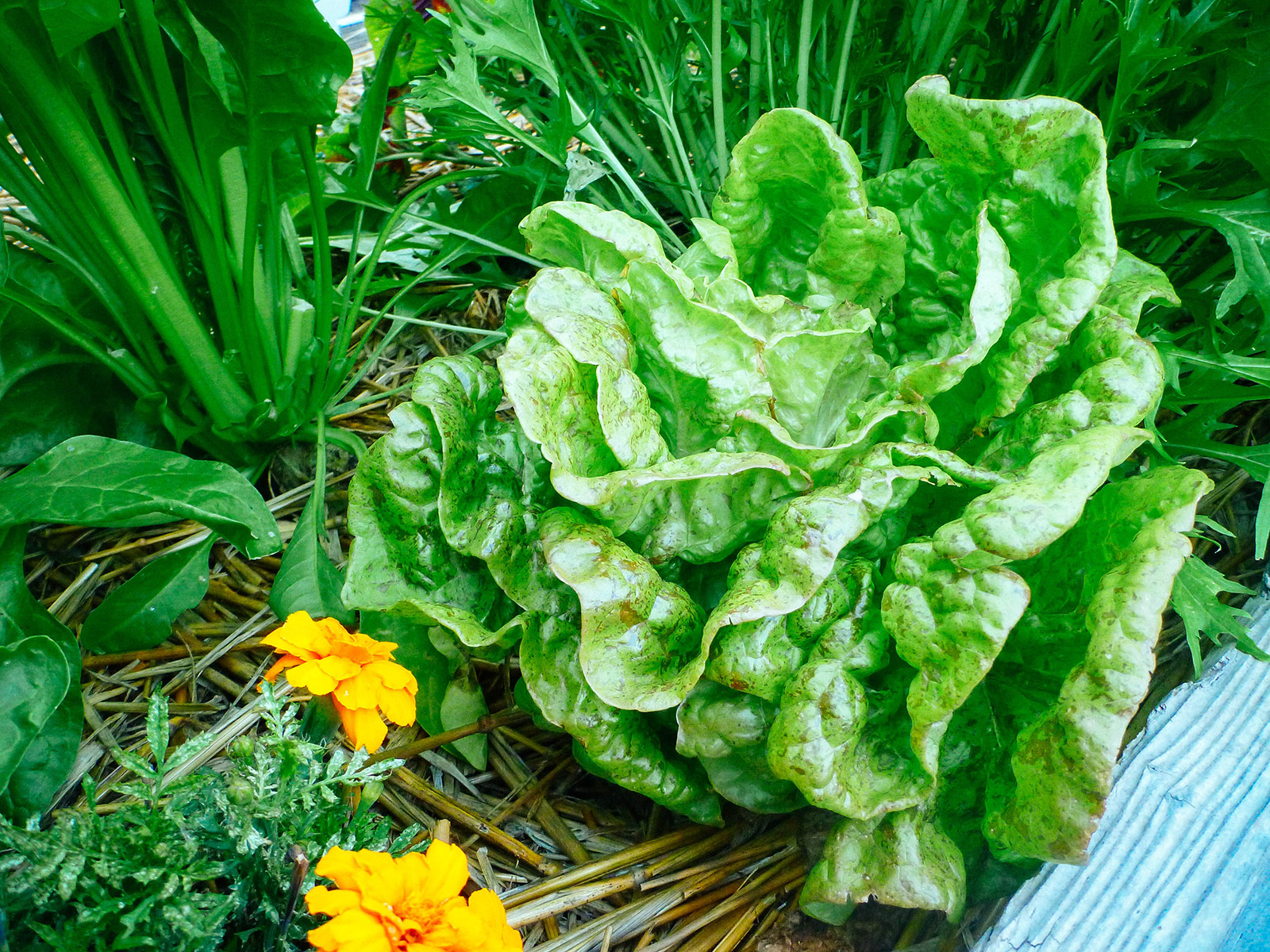













I was unable to download he storage guide. I done it in lots of ways but I probably could use more techniques from Linda’s experience.
Hi Dan, did you receive the link in your email and then were unable to download the guide from that email?
We have had great success with Merlot and Devil’s Ear this year in Sonoma County.
Thanks so much for all these tips. There are many varieties here I have not heard of. Thanks so much.
I truly look forward to your posts and articles!! Thank you so much!! Love your info and instruction. Your no-waste cookbook is a staple in my kitchen.
(In regards to your written suggestions, a shout out also to San Diego Seed Company who has produced multiple vegetable varieties for zones 9 and 10. Lettuce included. It’s great to get local seeds—whichever zone—that are strong in our areas.)
Keep up the good work Ms Linda!
Thanks Renae! And thank you for recommending San Diego Seed Company too.
Great info on specifics. Old gardener that knows everything finding new stufffrom young gardener!!! Thanks love it all.
Thanks so much for following my blog Mona! Very happy that you find it useful!
What a great article, thank you! I’ll be looking for some of these varieties. I have Already started some from seed.
You’re welcome, good luck with the new batch!
Greta article! Thanks!
You’re welcome!
I am just starting trying with the summer lettuce. I planted seeds of the heat tolerant in June of 2021. Nothing germinate. I think if I had planted plants they may have made it. Do you have any update because I will try again next year for sure. My spring lettuces did great but next year I will plant lettuces that are summer tolerant hopping they will last trough the summer. Then I want to plant more plants in late summer for a fall harvest. I planted lettuce seeds(summer tolerant) all summer this year but again none of them germinate. Thanks
I started buttercrunch, green star, and salad bowl in April, and they are holding strong at the very end of June, despite a string of days in the upper 90’s. My Asian greens bolted a month ago (sob).
Thank you for posting all of these heat tolerant and slow to turn bitter lettuces! I just had to pull mine out because even though they didn’t bolt, they were bitter. 🙁 Now I can go looking and try some of these varieties. I live in the USA in North Carolina Piedmont area and it heats up here very quickly. We’ve had a string of high to mid 90’s and I’m sure that’s what caused it. Then your article was sent to me by one of my gardening friends. 🙂
You’re welcome! You might also try growing some of these heat-tolerant lettuces under shade during the hottest part of the day, just to keep them producing longer. I’ve planted mine next to taller plants like tomatoes, or under a trellis where they get dappled light. A shade cloth also helps; plant the lettuce in a spot that gets nice morning sun, but stays covered in the afternoon.
I live in the San Gabriel Valley so I have the same problem. I too have tried to trick mother nature in hopes of having lots of lettuce to go with our tomatoes. Loving the Buttercrunch. Let’s see what happens in full on summer. Hoping they will still stay happy hanging out under the kale and swiss chard.
Thanks for the lettuce run down. Our red leaf just bolted last week, but we have no plans of doing anything with ’em.
At least you can start again soon!